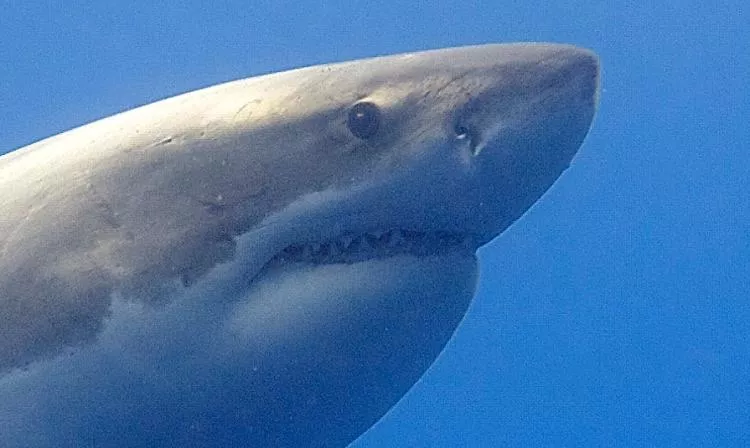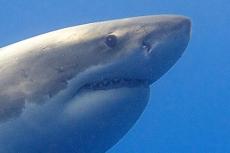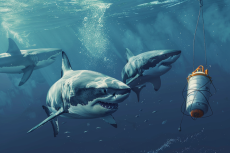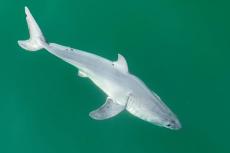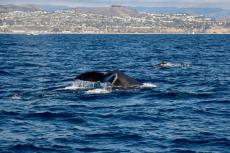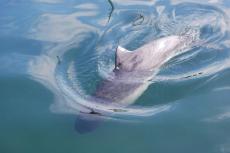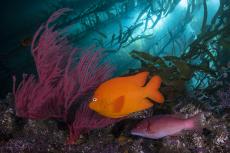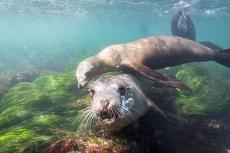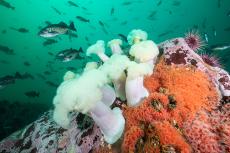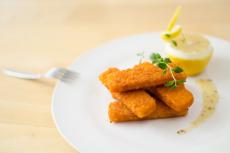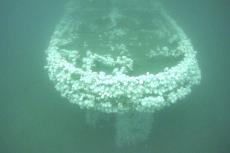A Closer Look at Human-Shark Encounters
Researchers at the University of California Shark Lab have found that swimmers, surfers, and great white sharks are often in close proximity in Southern Californian waters, much more so than had been assumed. Yet in spite of this, shark bites are rare. Shark Lab Director Chris Lowe emphasizes that white sharks generally ignore humans. They just do not see them as prey.
A recent article by Sam Fletcher begins with the gripping account of a wildlife videographer, Scott Fairchild. Using a drone, he captures a heart-stopping moment when a great white shark repeatedly approaches a lone swimmer off the coast of San Diego. Yet suddenly the shark veers away and disappears. Fairchild states that he has seen countless such encounters between swimmers and white sharks off the Californian coast.
We are not shark food
Shark Lab Director Chris Lowe has stated that people are around white sharks more than they are aware, making shark bites even rarer than previously thought. Lowe is studying these interactions and the circumstances surrounding various shark reactions. His work shows that white sharks, at least around San Diego, generally ignore people.
Shark mitigation measures
California stands out among regions where humans and sharks mingle along the shorelines. Unlike Australia and South Africa, where deadly measures such as culling have been used for over five decades, California refrains from using lethal measure to prevent shark attacks. In contrast, both Queensland and New South Wales in Australia use shark nets and baited hooks, as reported by the Australian Marine Conservation Society (AMCS).
But in the past ten years, California has recorded only two deaths caused by white sharks, while South Africa recorded three fatalities and Australia documented 13. Despite having a smaller population than Southern California, Australia sees three to four attacks per year, while California experiences one every four years, Fairchild noted. Although shark attacks remain extremely rare, they are more frequent in Australia and South Africa, he said.
Fear instead of science
Critics like Fairchild vehemently oppose Australia's approach, labelling it as 'moronic.' He points out the negative effects of these methods, especially the deaths of turtles and whales. Moreover, culling makes the situation worse by using bait to attract sharks in the first place.
Since 2001, Queensland's culling efforts have resulted in the capture of 413 whales and dolphins, 907 turtles, 1,766 rays, and the culling of 13,167 sharks, according to AMCS reports, though there is no reliable data to justify it. Fairchild underscores the reluctance to change these practices, driven in part by the fear of being held accountable for future shark attacks.
Shark behaviour is variable
Lowe acknowledges the ongoing challenge of predicting shark behaviour, especially globally. He points out the geographical variability in shark behaviour, using the unique phenomenon of white sharks breaching fully out of the water, as an example. This behaviour is primarily observed in South Africa.
Fairchild emphasizes the individual nature of shark behaviour, drawing parallels between regional variations and human cultural differences. Lowe stresses how important it is to predict shark behaviour, stressing that while shark attacks may occur more frequently in certain areas, interactions resulting in bites remain extremely low compared to peaceful encounters.
Education and conservation are needed
While shark attacks receive significant attention, the article underscores that the ocean poses greater dangers, with drowning being a far more common cause of death. The importance of sharks in maintaining marine ecosystems is highlighted, with researchers advocating for better public education and conservation efforts.
Fairchild's experiences as a videographer have led him to become an advocate for shark conservation, and he feels that accurate education is very important to dispel the misconceptions about white sharks which are believed as if they are facts. Ultimately, the article stresses the importance of coexistence and understanding between humans and sharks, not only for their benefit, but also for the health of our oceans.


